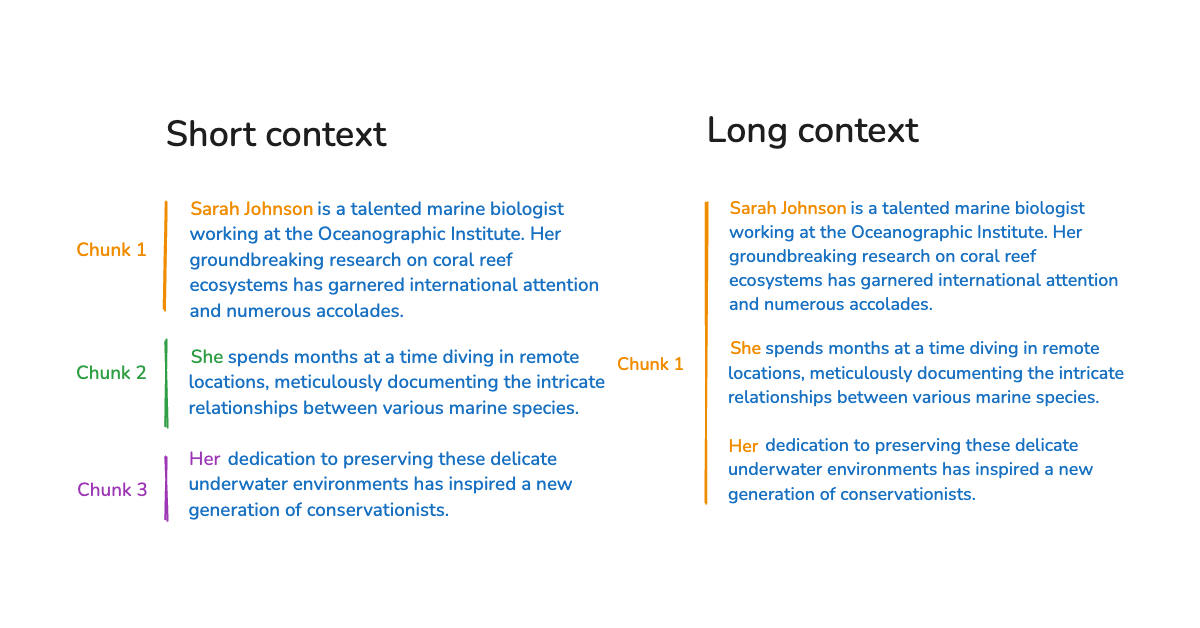Elastic expanded their open inference API capabilities with the integration of IBM watsonx™ Slate embedding models, marking an important milestone in our ongoing partnership with the IBM watsonx team. With this, Elasticsearch users gain immediate, simplified access to IBM’s Slate family of models while the IBM watsonx community can take advantage of Elasticsearch’s comprehensive AI search tooling and proven vector database capabilities.
Elastic’s open inference API, now generally available, enables you to create endpoints and use machine learning models from providers like IBM watsonx™. IBM® watsonx™ AI and Data Platform includes core components and AI assistants designed to scale and accelerate AI's impact using trusted data. The platform features open-sourced Slate embedding models (slate-125m, slate-30m) for retrieval-augmented generation, semantic search, and document comparison, and also the Granite family of LLMs trained on trusted enterprise data.
In this blog, we will explain how to use IBM watsonx™ Slate text embeddings when building Search AI experiences with Elasticsearch vector database. Elastic now supports the usage of these text embeddings, with the new semantic_text field chunking incoming text by default to fit the token limits of the platform’s models.
Prerequisites & creation of inference endpoint
You will need an IBM Cloud® Databases for Elasticsearch deployment. You can provision one through the catalog, the Cloud Databases CLI plug-in, the Cloud Databases API, or Terraform. Once the account is set up successfully, you should land on the IBM cloud home page.

You can then provision a Kibana instance and connect to your Databases for Elasticsearch instance using the managed service model of IBM Cloud using these steps -
- Set the Admin Password for your Elasticsearch deployment.
- Install Docker to pull the Kibana container image and connect it to Databases for Elasticsearch.
Alternatively, if you prefer not to run Kibana locally or install Docker, you can deploy Kibana using IBM Cloud® Code Engine. For details, see the documentation on deploying Kibana with Code Engine and connecting it to your Databases for Elasticsearch instance.
Generate an API key
- Go to IBM watsonx.ai cloud and log in using your credentials. You will land on the welcome page.

- Go to the API keys page.
- Create an API key.
Steps in Elasticsearch
Using DevTools in Kibana, create an inference endpoint using the watsonxai service for text_embedding
PUT _inference/text_embedding/ibm_watsonx_embedding
{
"service": "watsonxai",
"service_settings": {
"api_key": "<api_key>",
"url": "xxx.ml.cloud.ibm.com",
"model_id": "ibm/slate-30m-english-rtrvr",
"project_id": "<project_id>",
"api_version": "2023-05-29"
}
}You will receive the following response on the successful creation of the inference endpoint:
{
"inference_id": "ibm_watsonx_embedding",
"task_type": "text_embedding",
"service": "watsonxai",
"service_settings": {
"model_id": "ibm/slate-30m-english-rtrvr",
"project_id": "<project_id>",
"url": "xxx.ml.cloud.ibm.com",
"api_version": "2023-05-29",
"dimensions": 384,
"similarity": "dot_product",
"rate_limit": {
"requests_per_minute": 120
}
},
"task_settings": {}
}Generate embeddings
Below is an example of generating text_embedding for a single string
POST _inference/text_embedding/ibm_watsonx_embedding
{
"input": "Embed this text"
}You will receive the following response as embeddings:
{
"text_embedding": [
{
"embedding": [
0.009380317,
0.05560313,
...,
0.03804972
]
}
]
}Additionally, let's look at a semantic_text mapping example
Create an index containing semantic_text field
PUT books
{
"mappings": {
"properties": {
"title": {
"type": "text"
},
"semantic_text": {
"type": "semantic_text",
"inference_id": "ibm_watsonx_embedding"
},
"description": {
"type": "text",
"copy_to": [
"semantic_text"
]
}
}
}
}Insert some documents to the created index
POST /books/_bulk
{ "index": {"_id": "1" }}
{ "title": "The Art of Coding", "description": "A comprehensive guide to coding best practices.", "price": 39.99 }
{ "index": { "_id": "2" } }
{ "title": "Mysteries of the Universe", "description": "Exploring the unknown aspects of our universe.", "price":
24.50 }
{ "index": {"_id": "3" } }
{ "title": "The Journey Within", "description": "A deep dive into personal development.", "price": 18.75 }
{ "index": {"_id": "4" } }
{ "title": "The richest man in babylon", "description": "The Richest Man in Babylon by George S. Clason is a classic book that offers timeless financial wisdom through a series of parables set in ancient Babylon, one of history’s wealthiest cities. The book conveys its lessons through stories of Babylonian citizens who learn to achieve wealth, prosperity, and happiness by following basic financial principles. The central character, Arkad, who is the richest man in Babylon, shares his wisdom on wealth-building with friends and fellow citizens. He explains how he started as a poor scribe but grew rich by adhering to a set of practical rules, which are presented as the Seven Cures for a Lean Purse and the Five Laws of Gold. The Seven Cures for a Lean Purse emphasize essential steps for accumulating wealth: saving at least ten percent of earnings, controlling expenses to live below one’s means, making wise investments, protecting investments from loss, owning a home, ensuring future income, and continually increasing the ability to earn. The Five Laws of Gold focus on key principles such as accumulating money through savings, investing wisely, seeking advice from experienced investors, avoiding investments in unfamiliar areas, and steering clear of get-rich-quick schemes. The book uses various characters like Bansir, a chariot maker, and Kobbi, a musician, to illustrate common financial challenges, and they seek Arkad’s guidance to achieve financial security, learning the importance of discipline, thrift, and prudent investment. Other stories, such as those of Dabasir, who faces challenges repaying debts, and Rodan, who learns about wise lending, further reinforce these principles. The book emphasizes that wealth is not a matter of luck or fate but a result of adhering to sound financial practices and cultivating a mindset geared towards saving, investing, and learning continuously. Through its simple yet profound lessons, the book provides readers with practical advice on personal finance, helping them understand the value of money management, disciplined saving, and wise investment strategies to build and maintain wealth over time.", "price": 18.75 }Next, run a query using semantic_text
GET books/_search
{
"query": {
"semantic" : {
"field": "semantic_text",
"query": "maintain wealth over time"
}
}
}You will receive the following response from the query
{
...,
"hits": {
"max_score": 0.86763954,
"hits": [
{
"_index": "books",
"_id": "4",
"_score": 0.86763954,
"_source": {
"semantic_text": {
"inference": {
"inference_id": "ibm_watsonx_embedding",
"model_settings": {
"task_type": "text_embedding",
"dimensions": 384,
"similarity": "dot_product",
"element_type": "float"
},
"chunks": [
{
"text": "The Richest Man in Babylon by George S. Clason is a classic book that offers timeless financial wisdom through a series of parables set in ancient Babylon, one of history’s wealthiest cities. The book conveys its lessons through stories of Babylonian citizens who learn to achieve wealth, prosperity, and happiness by following basic financial principles. The central character, Arkad, who is the richest man in Babylon, shares his wisdom on wealth-building with friends and fellow citizens. He explains how he started as a poor scribe but grew rich by adhering to a set of practical rules, which are presented as the Seven Cures for a Lean Purse and the Five Laws of Gold. The Seven Cures for a Lean Purse emphasize essential steps for accumulating wealth: saving at least ten percent of earnings, controlling expenses to live below one’s means, making wise investments, protecting investments from loss, owning a home, ensuring future income, and continually increasing the ability to earn. The Five Laws of Gold focus on key principles such as accumulating money through savings, investing wisely, seeking advice from experienced investors, avoiding investments in unfamiliar areas, and steering clear of get-rich-quick schemes. The book uses various characters like Bansir, a chariot maker, and Kobbi, a musician, to illustrate common financial challenges, and they seek Arkad’s guidance to achieve financial security, learning the importance of discipline, thrift, and prudent investment. Other stories, such as those of Dabasir, who faces challenges repaying debts, and Rodan, who learns about",
"embeddings": [
-0.0012952854,
0.054616664,
...
]
},
{
"text": " home, ensuring future income, and continually increasing the ability to earn. The Five Laws of Gold focus on key principles such as accumulating money through savings, investing wisely, seeking advice from experienced investors, avoiding investments in unfamiliar areas, and steering clear of get-rich-quick schemes. The book uses various characters like Bansir, a chariot maker, and Kobbi, a musician, to illustrate common financial challenges, and they seek Arkad’s guidance to achieve financial security, learning the importance of discipline, thrift, and prudent investment. Other stories, such as those of Dabasir, who faces challenges repaying debts, and Rodan, who learns about wise lending, further reinforce these principles. The book emphasizes that wealth is not a matter of luck or fate but a result of adhering to sound financial practices and cultivating a mindset geared towards saving, investing, and learning continuously. Through its simple yet profound lessons, the book provides readers with practical advice on personal finance, helping them understand the value of money management, disciplined saving, and wise investment strategies to build and maintain wealth over time.",
"embeddings": [
-0.025139397,
0.054932922,
0.09041961,
...
]
}
]
}
},
"price": 18.75,
"description": "The Richest Man in Babylon by George S. Clason is a classic book that offers timeless financial wisdom through a series of parables set in ancient Babylon, one of history’s wealthiest cities. The book conveys its lessons through stories of Babylonian citizens who learn to achieve wealth, prosperity, and happiness by following basic financial principles. The central character, Arkad, who is the richest man in Babylon, shares his wisdom on wealth-building with friends and fellow citizens. He explains how he started as a poor scribe but grew rich by adhering to a set of practical rules, which are presented as the Seven Cures for a Lean Purse and the Five Laws of Gold. The Seven Cures for a Lean Purse emphasize essential steps for accumulating wealth: saving at least ten percent of earnings, controlling expenses to live below one’s means, making wise investments, protecting investments from loss, owning a home, ensuring future income, and continually increasing the ability to earn. The Five Laws of Gold focus on key principles such as accumulating money through savings, investing wisely, seeking advice from experienced investors, avoiding investments in unfamiliar areas, and steering clear of get-rich-quick schemes. The book uses various characters like Bansir, a chariot maker, and Kobbi, a musician, to illustrate common financial challenges, and they seek Arkad’s guidance to achieve financial security, learning the importance of discipline, thrift, and prudent investment. Other stories, such as those of Dabasir, who faces challenges repaying debts, and Rodan, who learns about wise lending, further reinforce these principles. The book emphasizes that wealth is not a matter of luck or fate but a result of adhering to sound financial practices and cultivating a mindset geared towards saving, investing, and learning continuously. Through its simple yet profound lessons, the book provides readers with practical advice on personal finance, helping them understand the value of money management, disciplined saving, and wise investment strategies to build and maintain wealth over time.",
"title": "The richest man in babylon"
}
},
...
]
}
}Conclusion
With the integration of IBM watsonx™ text embeddings, the Elasticsearch Open Inference API continues to empower developers with enhanced capabilities for building powerful and flexible AI-powered search experiences. Explore more supported encoder foundation models available with watsonx.ai.
Ready to try this out on your own? Start a free trial.
Elasticsearch has integrations for tools from LangChain, Cohere and more. Join our advanced semantic search webinar to build your next GenAI app!
Related content

September 18, 2025
Elasticsearch open inference API adds support for Google’s Gemini models
Learn how to use the Elasticsearch open inference API with Google’s Gemini models for content generation, question answering, and summarization.

May 20, 2025
Spring AI and Elasticsearch as your vector database
Building a complete AI application using Spring AI and Elasticsearch.

November 26, 2024
RAG made easy with Spring AI + Elasticsearch
Customize your AI chatbot experience with private data. Learn how to build a Retrieval-Augmented Generation (RAG) app with Spring AI and Elasticsearch.

November 22, 2024
Late chunking in Elasticsearch with Jina Embeddings v2
Using the Jina Embeddings v2 model in Elasticsearch, implementing late chunking, and exploring the pros and cons of long context embeddings models.

November 15, 2024
Federated SharePoint searches with Azure OpenAI Service On your data
Using Azure OpenAI Service on your data with Elastic as vector database.